Related Research Articles
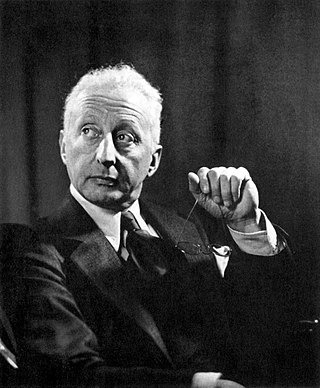
Jerome David Kern was an American composer of musical theatre and popular music. One of the most important American theatre composers of the early 20th century, he wrote more than 700 songs, used in over 100 stage works, including such classics as "Ol' Man River", "Can't Help Lovin' Dat Man", "A Fine Romance", "Smoke Gets in Your Eyes", "The Song Is You", "All the Things You Are", "The Way You Look Tonight" and "Long Ago ". He collaborated with many of the leading librettists and lyricists of his era, including George Grossmith Jr., Guy Bolton, P. G. Wodehouse, Otto Harbach, Oscar Hammerstein II, Dorothy Fields, Johnny Mercer, Ira Gershwin and Yip Harburg.
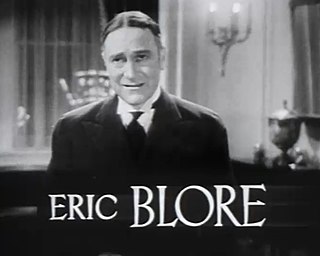
Eric Blore Sr. was an English actor and writer. His early stage career, mostly in the West End of London, centred on revue and musical comedy, but also included straight plays. He wrote sketches for and appeared in variety.

Dame Esmerelda Cicely Courtneidge, was an Australian-born British actress, comedian and singer. The daughter of the producer and playwright Robert Courtneidge, she was appearing in his productions in the West End by the age of 16, and was quickly promoted from minor to major roles in his Edwardian musical comedies.

A Man of Means is a collection of six short stories written in collaboration by P. G. Wodehouse and C. H. Bovill. The stories first appeared in the United Kingdom in The Strand Magazine in 1914, and in the United States in Pictorial Review in 1916. They were later published in book form in the UK by Porpoise Books in 1991. The collection was released on Project Gutenberg in 2003.

The Princess Theatre was a joint venture between the Shubert Brothers, producer Ray Comstock, theatrical agent Elisabeth Marbury and actor-director Holbrook Blinn. Built on a narrow slice of land located at 104–106 West 39th Street, just off Sixth Avenue in New York City, and seating just 299 people, it was one of the smallest Broadway theatres when it opened in early 1913. The architect was William A. Swasey, who designed the Winter Garden Theatre two years earlier.

Sir Edward Seymour Hicks, better known as Seymour Hicks, was a British actor, music hall performer, playwright, actor-manager and producer. He became known, early in his career, for writing, starring in and producing Edwardian musical comedy, often together with his famous wife, Ellaline Terriss. His most famous acting role was that of Ebenezer Scrooge in Charles Dickens's A Christmas Carol.

George Grossmith Jr. was an English actor, theatre producer and manager, director, playwright and songwriter, best remembered for his work in and with Edwardian musical comedies. Grossmith was also an important innovator in bringing "cabaret" and "revues" to the London stage. Born in London, he took his first role on the musical stage at the age of 18 in Haste to the Wedding (1892), a West End collaboration between his famous songwriter and actor father and W. S. Gilbert.

Phyllis Bedells was a British ballerina and dance teacher.
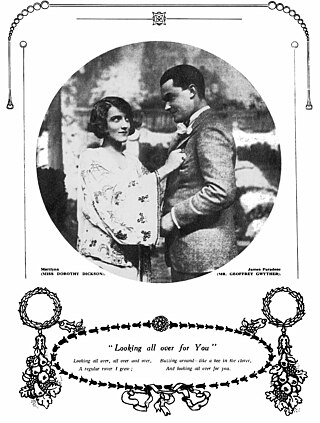
The Cabaret Girl is a musical comedy in three acts with music by Jerome Kern and book and lyrics by George Grossmith, Jr. and P. G. Wodehouse. It was produced by Grossmith and J. A. E. Malone at the Winter Garden Theatre in London's West End in September 1922 and featured Dorothy Dickson, Grossmith, Geoffrey Gwyther, and Norman Griffin in the leading roles.

Frederick A. Thompson, usually credited as Fred Thompson was an English writer, best known as a librettist for about fifty British and American musical comedies in the first half of the 20th century. Among the writers with whom he collaborated were George Grossmith Jr., P. G. Wodehouse, Guy Bolton and Ira Gershwin. Composers with whom he worked included Lionel Monckton, Ivor Novello and George Gershwin.

Harriet Augusta Sinden (1877–1950), known professionally as Topsy Sinden, was an English dancer, actress and singer. She was best known for her performances in Edwardian musical comedy and pantomime, both in London and on tour. Sinden was an accomplished tap dancer and skirt dancer.

Kissing Time, and an earlier version titled The Girl Behind the Gun, are musical comedies with music by Ivan Caryll, book and lyrics by Guy Bolton and P. G. Wodehouse, and additional lyrics by Clifford Grey. The story is based on the 1910 play, Madame et son Filleul by Maurice Hennequin, Pierre Véber and Henry de Gorsse. The story is set in contemporary France, with a glamorous actress at the centre of a farcical plot of imposture, intrigue and mistaken identity.
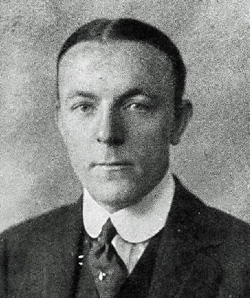
George Windsor Graves was an English comic actor. Although he could neither sing nor dance, he became a leading comedian in musical comedies, adapting the French and Viennese opéra-bouffe style of light comic relief into a broader comedy popular with English audiences of the period. His comic portrayals did much to ensure the West End success of Véronique (1904) The Little Michus, and The Merry Widow (1907).
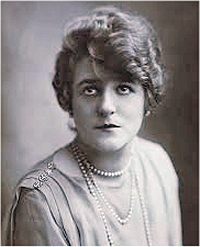
Alice Henriette Lapize, better known by her stage name, Alice Delysia and sometimes Elise Delisia, was a French actress and singer who made her career in English musical theatre. After performing in the chorus at the Moulin Rouge and other theatres in Paris from the age of 14, she became a chorus girl in Edwardian musical comedies, briefly on Broadway in 1905, then in London for several years and back in Paris in 1912.

Phyllis Neilson-Terry was an English actress. She was a member of the third generation of the theatrical dynasty the Terry family. After early successes in the classics, including several leading Shakespearean roles, she spent more than four years in the US, in generally lightweight presentations.
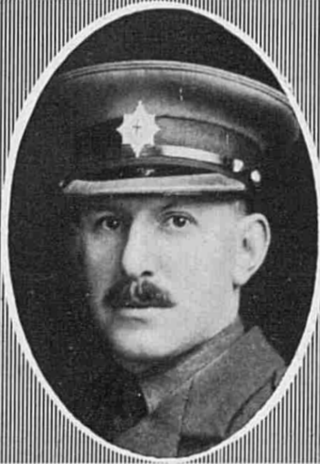
Charles Henry Bovill, professionally known as C. H. Bovill, was an English writer, songwriter and lyricist, known for his collaborations with P. G. Wodehouse, George Grossmith Jr. and others. His career was cut short by the First World War in which he died while serving in the British army in France.
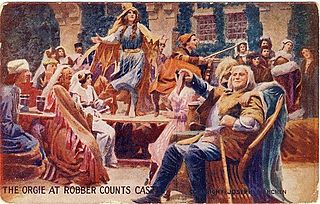
The Miracle (1912), is a British silent full-colour film, using a hand-coloured process similar to Pathéchrome. Produced by Joseph Menchen and directed by Michel Carré, it is among the first full-colour feature films to be made. It stars Maria Carmi, Ernst Matray, Florence Winston and Douglas Payne, and was filmed on location in Austria.

Jean Aylwin, also known as Jean Isabella Griffin Aitkin, was a Scottish actress and singer, often billed as "The Lady Harry Lauder".
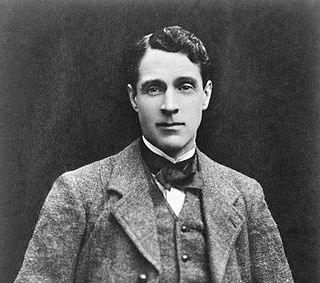
Alfred Lester, real name Alfred Edwin Leslie, was an English actor and comedian. Born into a theatrical family, he learnt his craft touring in melodramas, as a young man, but made his reputation as a comedian in musical comedy, music hall and, later, revue.
Leave it to Psmith, subtitled "A comedy of youth, love and misadventure", is a 1930 comedy play by Ian Hay and P. G. Wodehouse, based on the latter's 1923 novel of the same title. It premiered in London's West End at the Shaftesbury Theatre on 29 September 1930.
References
- ↑ "Variety Theatres (classified ads)". Daily Express. 3 January 1914. Most sources incorrectly state 4 January (which was a Sunday, when it was against the law for UK theatres to open). The Daily Express advertisement reads "To-night at 8.30, First Performance of NUTS AND WINE, The latest revue, by C H BOVILL and G P [ sic ] WODEHOUSE" and a review on Monday, 5 January, referred to the performance on "Saturday night".
- ↑ "Classified advertisements)". The Times. 28 March 1914.The advertisement for The Empire states "NUTS AND WINE (Last Night)". Several authorities mistakenly state that there were only seven performances.
- 1 2 Day, Barry (2004). The complete lyrics of P G Wodehouse. Lanham, Md.: Scarecrow Press. ISBN 0-8108-4994-1.
- ↑ "Dramatis personæ". The Observer . 28 December 1913.
- 1 2 3 4 "Nuts and Wine": The new revue at the Empire". The Observer . 4 January 1914.
- ↑ "Vicar's "problem" sketch". The Times . 29 October 1913.
- ↑ "Jack Johnson and the musichall". The Times . 22 August 1913.
- 1 2 3 4 5 ""Nuts and Wine": New revue produced at the Empire". Daily Express. 5 January 1914.
- 1 2 ""Nuts and Wine": The new revue at the Empire". The Times. 5 January 1914.
- ↑ "Classified advertisements". The Times. 3 March 1914.
- ↑ Quoted in "Mimes and Music". Evening Post. Wellington. 21 February 1914. Retrieved 21 February 2011.
- ↑ Bedells, Phyllis (1954). My Dancing Years. London: Phoenix House.
- ↑ "The lexicographer's arm chair". The Literary Digest. 59. 23 November 1918.